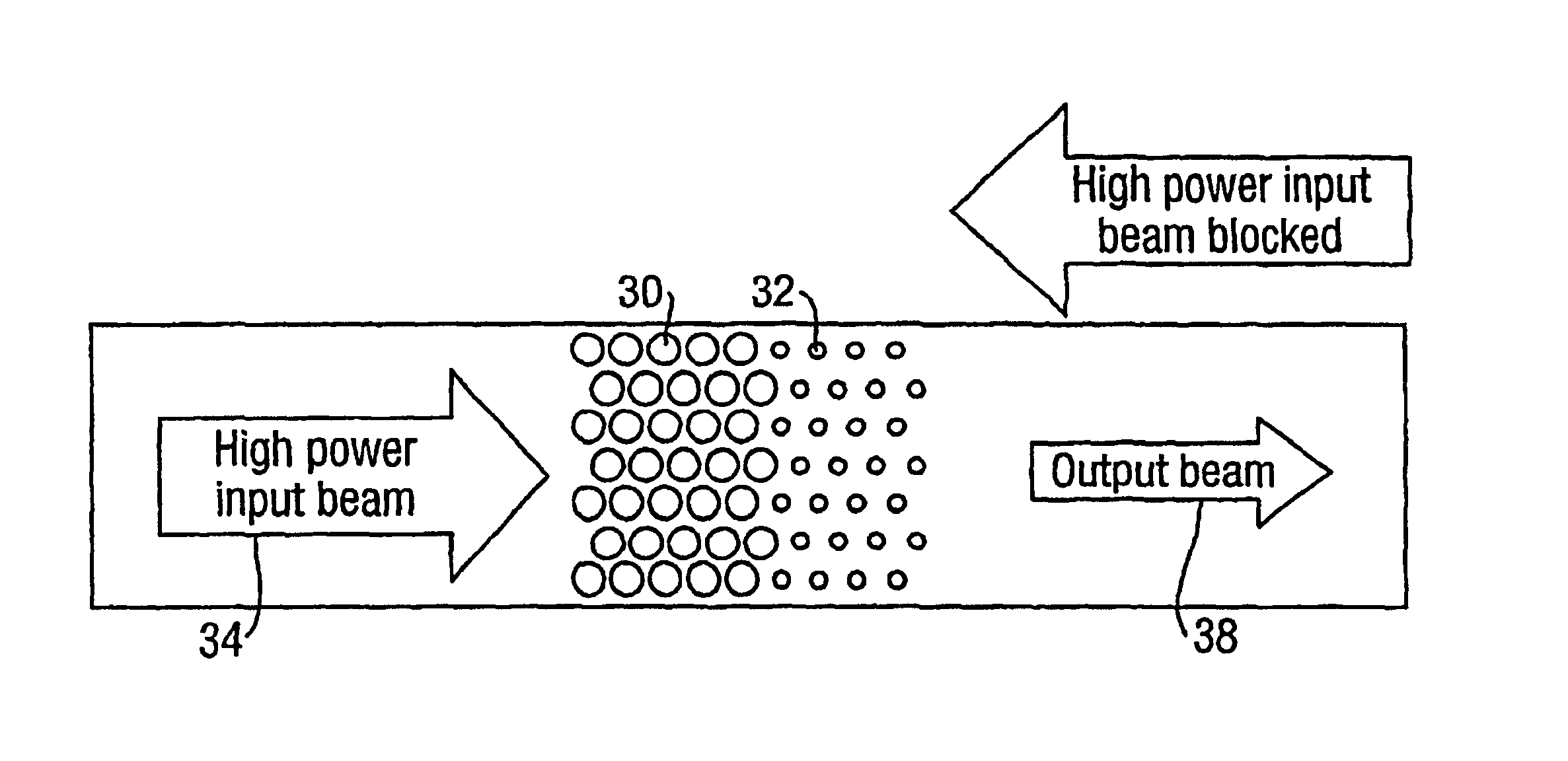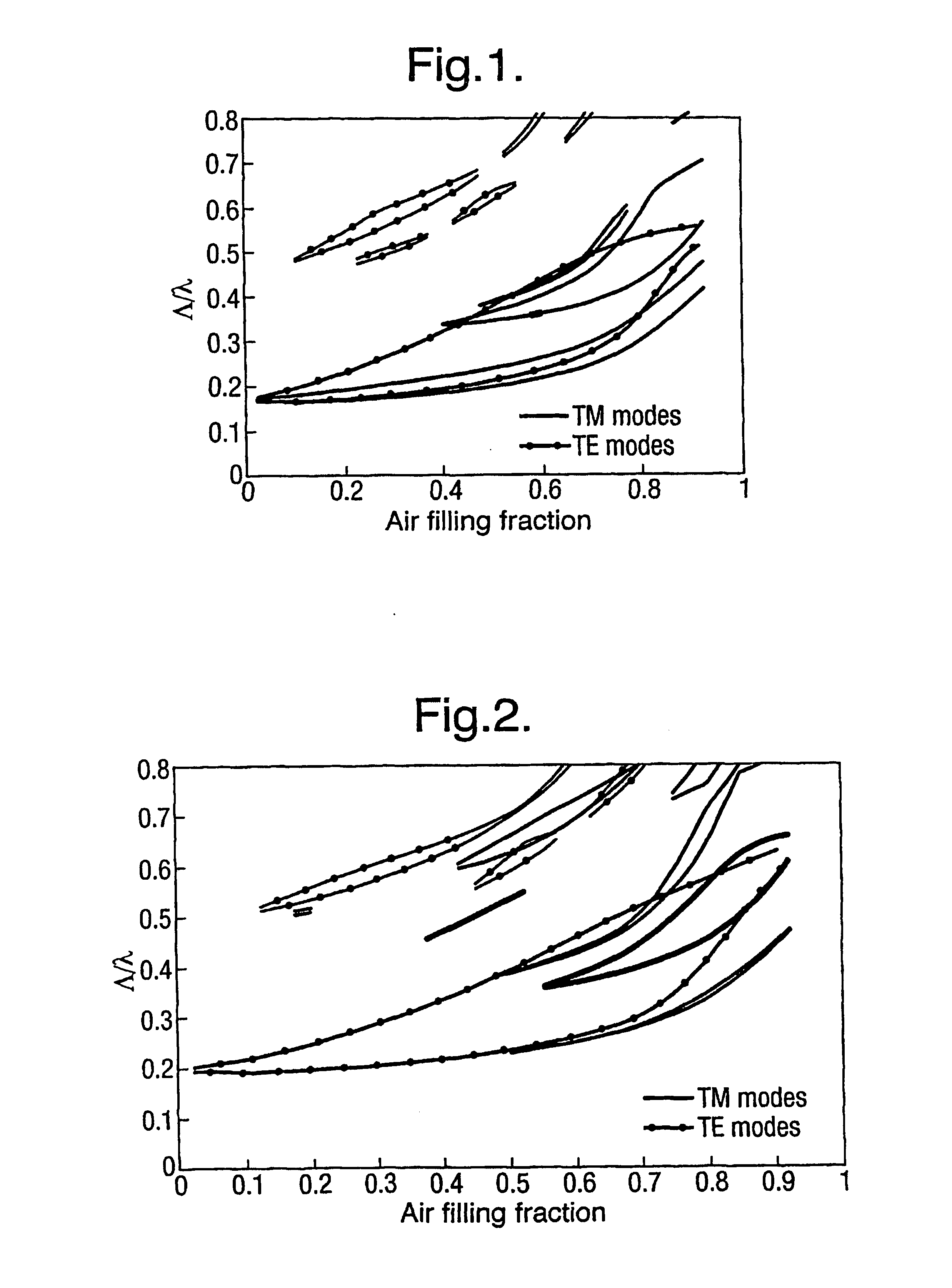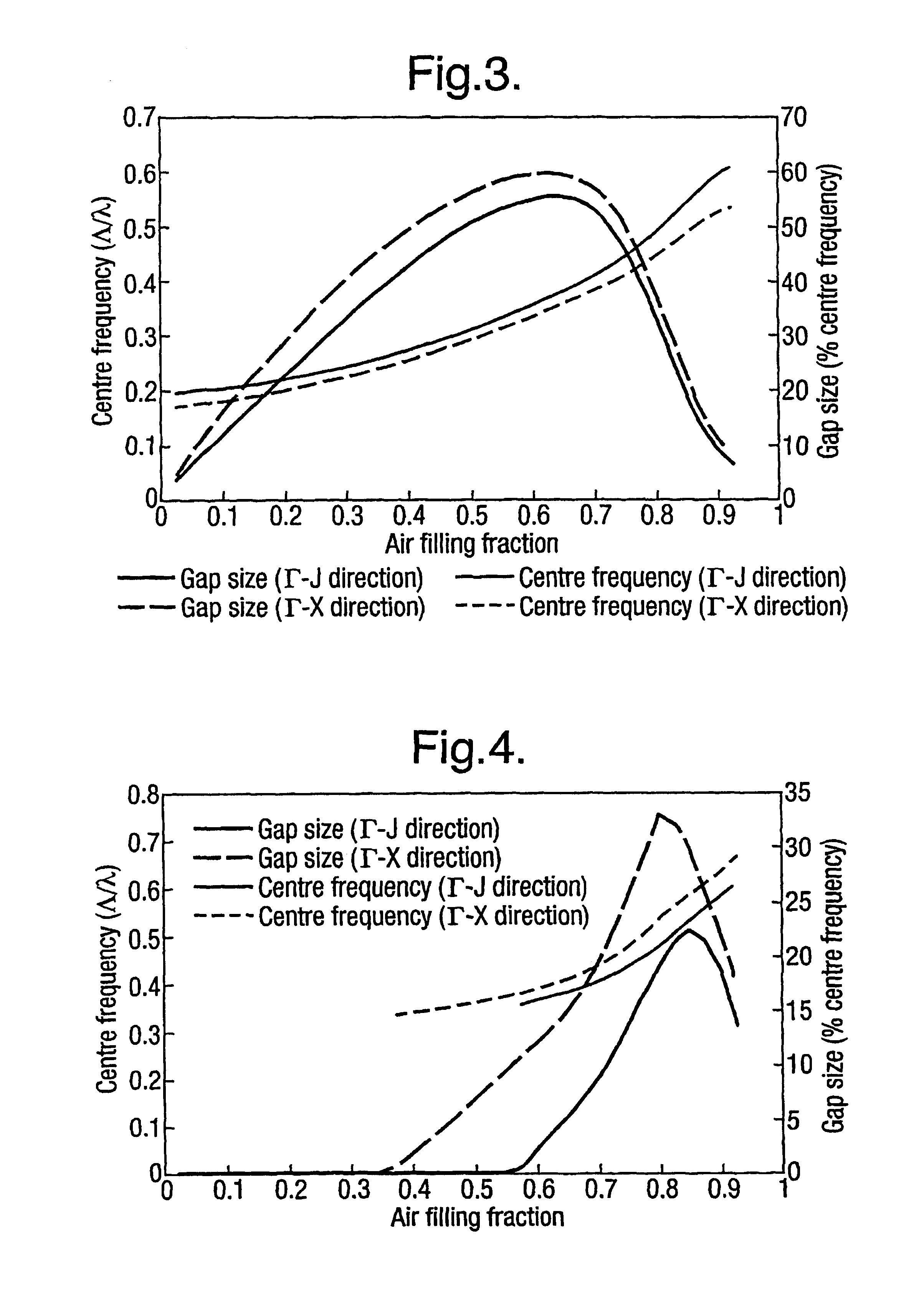Optical device
a technology of optical devices and optical components, applied in the field of optical devices, can solve the problem that devices are not readily integrated into the circuit arrangement of other optical devices, and achieve the effect of non-linear
- Summary
- Abstract
- Description
- Claims
- Application Information
AI Technical Summary
Benefits of technology
Problems solved by technology
Method used
Image
Examples
first embodiment
[0079 of the Invention
[0080]For many applications involving the use of photonic crystals it is desirable to acquire complete and absolute photonic bandgaps. In the case of such photonic band gap structures, the wave propagation is forbidden for any direction of propagation, and independent of the polarisation state. This provides a preferred photonic band gap structure for the use in applications such as the inhibition of spontaneous emission and polarisation independent devices. Periodic triangular and hexagonal lattice structures can support complete photonic bandgaps in two and three dimensions. However, as shown in FIGS. 9-14, complete and absolute photonic band gaps (CAPBGs) have only been achieved in very high dielectric constant materials like GaAs (ε=13.6) using hexagonal or triangular lattice structures. The frequency range of the bandgaps formed by such a structure is also highly dependent upon the direction of wave propagation, hence the structure is not suitable for all ...
PUM
 Login to View More
Login to View More Abstract
Description
Claims
Application Information
 Login to View More
Login to View More - R&D
- Intellectual Property
- Life Sciences
- Materials
- Tech Scout
- Unparalleled Data Quality
- Higher Quality Content
- 60% Fewer Hallucinations
Browse by: Latest US Patents, China's latest patents, Technical Efficacy Thesaurus, Application Domain, Technology Topic, Popular Technical Reports.
© 2025 PatSnap. All rights reserved.Legal|Privacy policy|Modern Slavery Act Transparency Statement|Sitemap|About US| Contact US: help@patsnap.com



